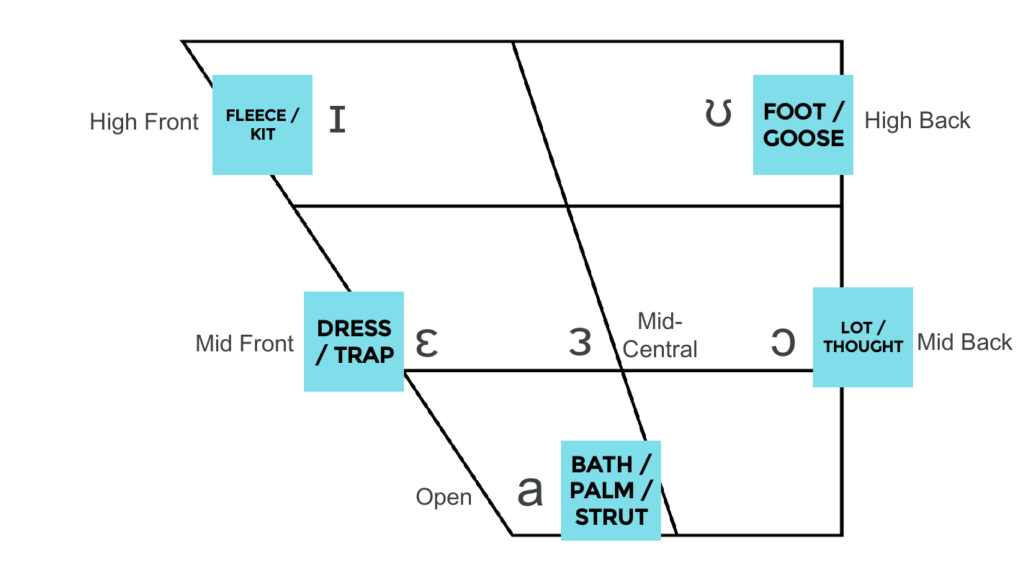Please see How to Work on an Accent for advice on using this breakdown.
Listening Sample Subject
Key Sounds
For each sound, I’ve included audio examples and a dropdown section of practice phrases.
Unless otherwise indicated, practice phrases are excerpted from Lexical Sets for Actors by Eric Armstrong under a creative commons license.
Vowel Sounds
The vowel inventory of Yiddish is about half as large as English–just six vowel qualities. As a result, a native Yiddish speaker may tend to distribute English vowel sounds into a simplified schema, depending on their fluency.

Native accents of English tend to be rule-bound and consistent. Non-native accents, on the other hand, tend to be more fluid because they are based on an individual’s challenges in attempting native-like pronunciations.
Because English pronunciation rules are complex and inconsistent, non-native English speakers often find it challenging to determine correct pronunciations based on, for instance, spelling. This can lead to a certain amount of flexibility in the “rules” for performing in the accent, and certain words may have different pronunciations depending on context or happenstance.
As an exercise, what happens if you limit your English pronunciation to a small number of basic vowel qualities? Conversely, what happens if your character has a more nuanced understanding of English?
The information below is not a set of rules, but rather a starting place for flexible speech choices.
Close Front Vowel Sounds
Words like KIT and FLEECE may be pronounced with a similar sound.
Words like TRAP
Words like TRAP may use a similar sound to words like DRESS.
Open Vowel Sounds
Words like BATH, PALM, and STRUT may all use a similar open vowel quality.
Rounded Back Vowel Sounds
Words like LOT and THOUGHT may be pronounced with a similar round back vowel quality.
Close Back Vowel Sounds
Words like FOOT and GOOSE may be pronounced with a similar sound.
Consonant Sounds
R Sounds
Yiddish speakers may use primarily tapped R sounds (made with the tip of the tongue) with occasional instances of back uvular R (made with the back of the body of the tongue). You can hear both varieties below. Try reading some practice text aloud using a tapped R.
W Sounds
Yiddish speakers may replace /w/ with a V sound. Note that this speaker’s level of fluency means that sometimes he uses this feature, and sometimes he doesn’t.
-ING Endings
Words with the -ing suffix are pronounced with a final K sound (i.e. “-ink”.)
TH-Stopping
TH sounds are pronounced as D and T (e.g. “these things”–>”dese tinks”.)
Final Consonant Devoicing
Voiced consonant sounds may lose their voicing at the ends of words.
- Z becomes S
- V becomes F
- D becomes T
- G becomes K
For example, in this accent the word “dogs” might be pronounced the same as “docks”.
Two common places to watch for this feature are in plural noun endings and third-person verb endings.
Specific Pronunciations
Cârnați
/kɨrˈnaːt͡si/
Audio by Google Translate
